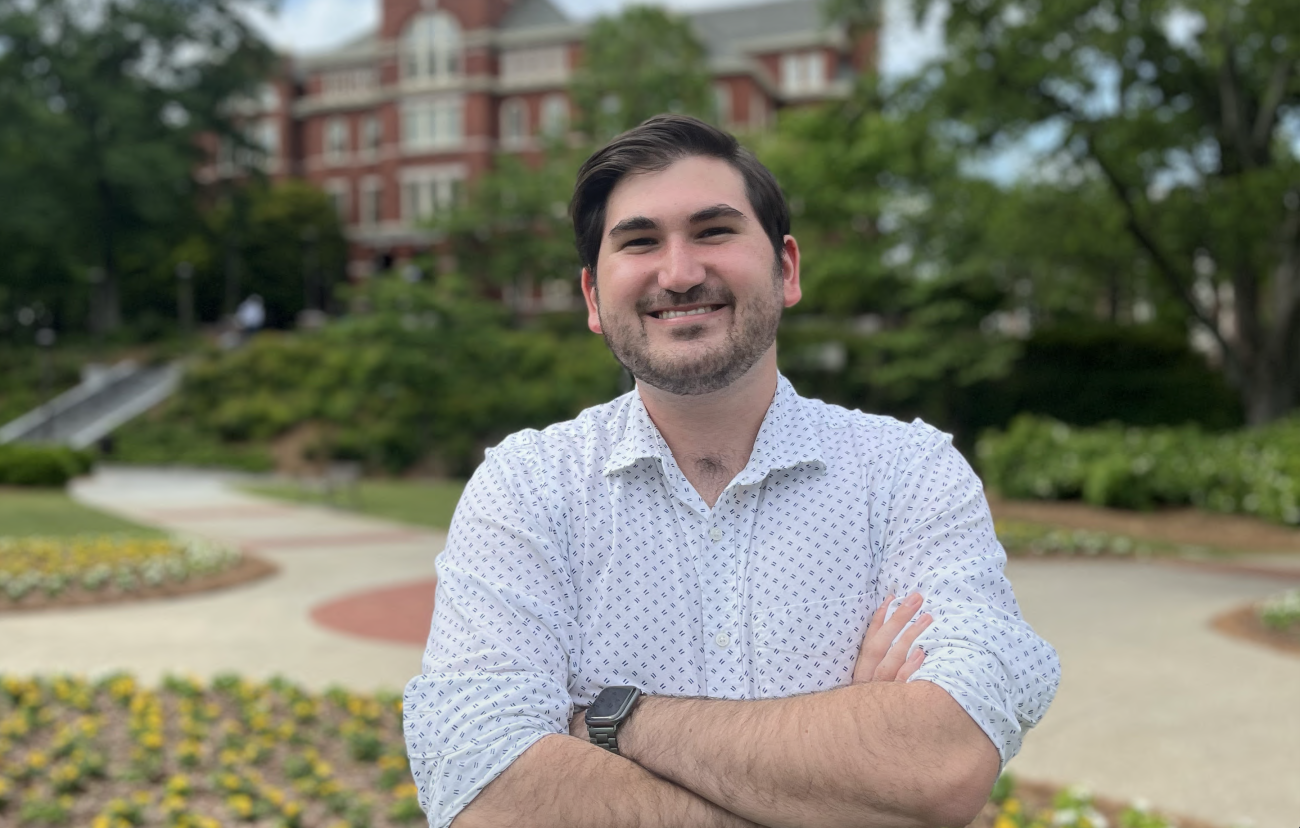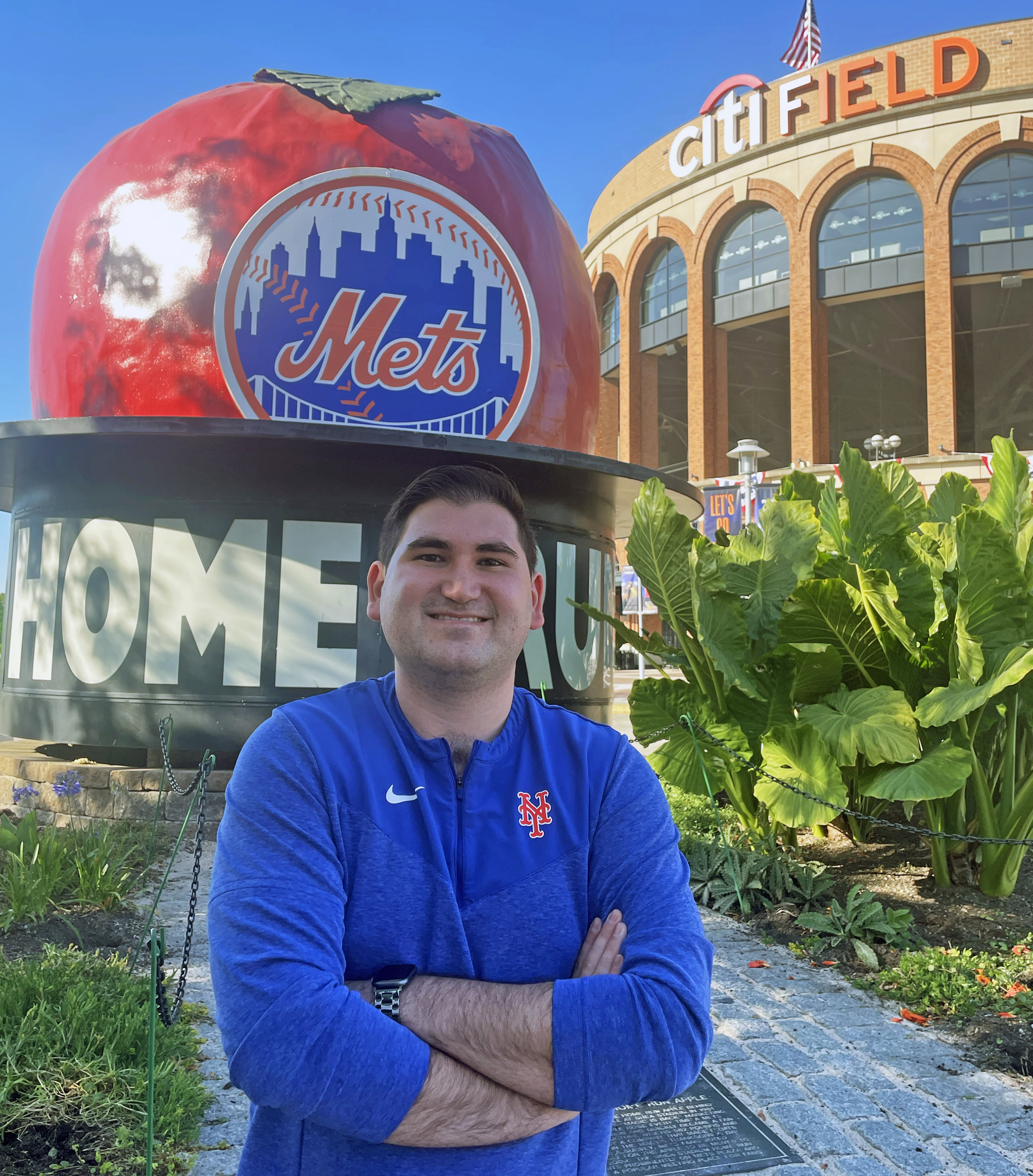Georgia Tech grad reflects on his rookie season as a biomechanics engineer with the New York Mets
By Jerry Grillo
Dylan Pané’s rookie season in Major League Baseball was two victories shy of being absolutely perfect, but he isn’t complaining. His ball club, the New York Mets, made it all the way to the National League Championship Series (NLCS), where they lost to the Los Angeles Dodgers in six games.
For Pané, who grew up about an hour away from the Mets’ ballpark, Citi Field, this was the stuff that dreams are made of. Well, kind of.
“I’ve been a diehard Mets fan since day one — I grew up going to Shea Stadium and Citi Field and even have a family dog named Shea," said Pané, 23.
And now, this Georgia Tech graduate is a New York Met. He doesn't throw a blazing fastball or hit with power to the opposite field. But, as a biomechanics engineer for the Mets' "performance technology" team, Pané helps other guys do those things. He earned his bachelor’s degree in biomedical engineering in May 2023 and joined the Mets in January 2024, right on time for spring training and a storybook season.
The Mets were mired in fourth place in early June but posted a 65-38 record the rest of the way, catching the Atlanta Braves on the last day of the season to qualify for the playoffs.
“It has been so fun and exciting to be a part of the Mets during this crazy season,” Pané said shortly after the team’s season-ending loss in the NLCS. “These past couple of weeks in particular have had some of the most memorable Mets moments in a long time, so it’s impossible to not be excited about that. The inner fan in me lives and dies with every pitch, but you have to balance that out with professionalism throughout the day.”
New Tools, Same Old Game
Biomechanics engineers in baseball use motion-capture technology, wearable sensors, and high-speed cameras to analyze and optimize player movement and performance — particularly when players are pitching or hitting.
In his job with the Mets, Pané collects and analyzes data that helps build a better understanding of the physical forces working on a player’s body.
Collaborating closely with coaches, trainers, and players, Pané and his fellow biomechanics engineers turn that data into action, recommending adjustments to a pitcher’s throwing mechanics to reduce stress or suggesting changes in a batter’s stance for more power. The goal is to improve performance while minimizing injury risks.
This high-tech approach isn’t limited to the big leagues, either.
“My time at Georgia Tech springboarded me in a couple different ways into the career that I have today,” Pané said. “The main reason was my work in the Georgia Tech Pitching Lab for the baseball team.”
During his junior year, Pané took a class called Intro to Sports Science where he met Mindy Millard-Stafford, a professor in the School of Biological Sciences. Millard-Stafford connected him with the lab.
For a kid hellbent on a career in baseball, the fact that such a lab existed was great news.
“I was able to volunteer in the pitching lab and teach myself all the different technologies that were a part of baseball biomechanics,” he said. “In the fall of my senior year, the team hired me to test the pitchers and report on them to the pitching coach, which gave me my first real experience working in baseball.”
Pané also worked as a teaching assistant for lecturer Jay Blumling in the Wallace H. Coulter Department of Biomedical Engineering, gaining lots of experience with biotech hardware — and troubleshooting that hardware.
“It’s a skill that is extremely helpful in the job I have today,” Pané said. “Along with my pitching lab work, my education and experiences as a whole at Georgia Tech taught me how to think critically and look at problems through different lenses.”
Jacket Footsteps
Pané grew up in a family of engineers and educators. Both of his parents are high school science teachers; his grandfather and uncle studied engineering at Georgia Tech. And all of them love the Mets. Well, maybe not his mother, who is from Philadelphia, home of the hated Phillies. (“She’s coming around now, I think,” Pané said.)
Growing up, his favorite baseball player was Mets third baseman David Wright, although Pané was probably a little more like pitching ace Jacob deGrom. Because Pané was a pitcher, and he had this very specific idea since he was a little kid. He was going to a small Division III college, where he could play baseball and study engineering.
“I always wanted to be some kind of engineer but didn’t know what,” he said. “I loved everything about math and science, so it was just a matter of deciding what kind engineering. I stumbled on biomechanics.”
The summer before his junior year of high school, Pané blew out his elbow at a college showcase. His college baseball fantasy ended in an instant. He was devastated. Doctors said he’d torn his ulnar collateral ligament but not enough to get surgery. They suggested physical therapy and plasma injections. He tried that, but the elbow still hurt.
“That put me in the mindset of, ‘If they aren’t going to help me, I’m going to do it myself,’” Pané said.
With the other half of his dream still viable — studying engineering — Pané started researching engineering disciplines that would help him address the elbow problem and satisfy his career interests: “That was biomedical engineering, and Georgia Tech became the dream school, due to its great BME program.”
He’d never wanted to follow in his family’s Yellow Jacket footsteps, but Pané made it work in Atlanta. He even got to play ball — four years of club baseball while at Georgia Tech.
“I took every biomechanics class I could and did a physiology minor for the sole purpose of taking sports science and kinesiology,” he said. “I’ve become more practical and know that I won’t fix every elbow or prevent every injury. But the experience introduced me to the world of baseball biomechanics, which has impacted my entire life and career. And I got to play baseball in college.”
Now he has big league experience and achieved a childhood dream — every day, he gets to walk into Citi Field to make a difference for the baseball club that sparked his love the sport.
So, he doesn’t want to think too far ahead about what’s next. Though he has some ideas.
“I’d love to continue working for the Mets and see how far that takes me in the baseball world,” Pané said. “When all is said and done in my baseball career, I want to shift to teaching. Seeing the impacts my parents and grandparents had on their students left a lasting impression on me. Whether there is an opportunity to merge my love of baseball and teaching is yet to be seen, but one day I would like to try that.”
Latest BME News
Jo honored for his impact on science and mentorship
The department rises to the top in biomedical engineering programs for undergraduate education.
Commercialization program in Coulter BME announces project teams who will receive support to get their research to market.
Courses in the Wallace H. Coulter Department of Biomedical Engineering are being reformatted to incorporate AI and machine learning so students are prepared for a data-driven biotech sector.
Influenced by her mother's journey in engineering, Sriya Surapaneni hopes to inspire other young women in the field.
Coulter BME Professor Earns Tenure, Eyes Future of Innovation in Health and Medicine
The grant will fund the development of cutting-edge technology that could detect colorectal cancer through a simple breath test
The surgical support device landed Coulter BME its 4th consecutive win for the College of Engineering competition.









